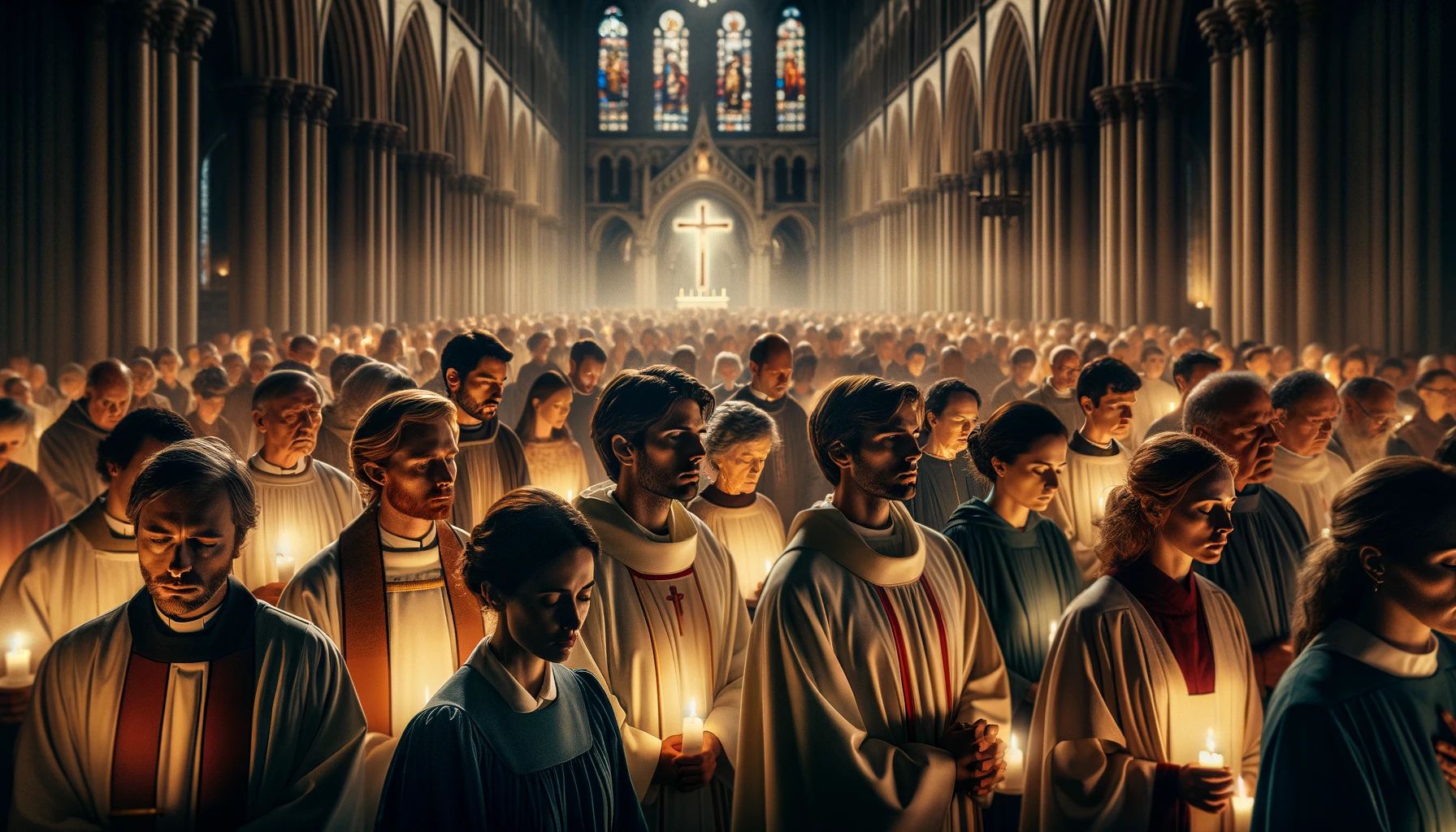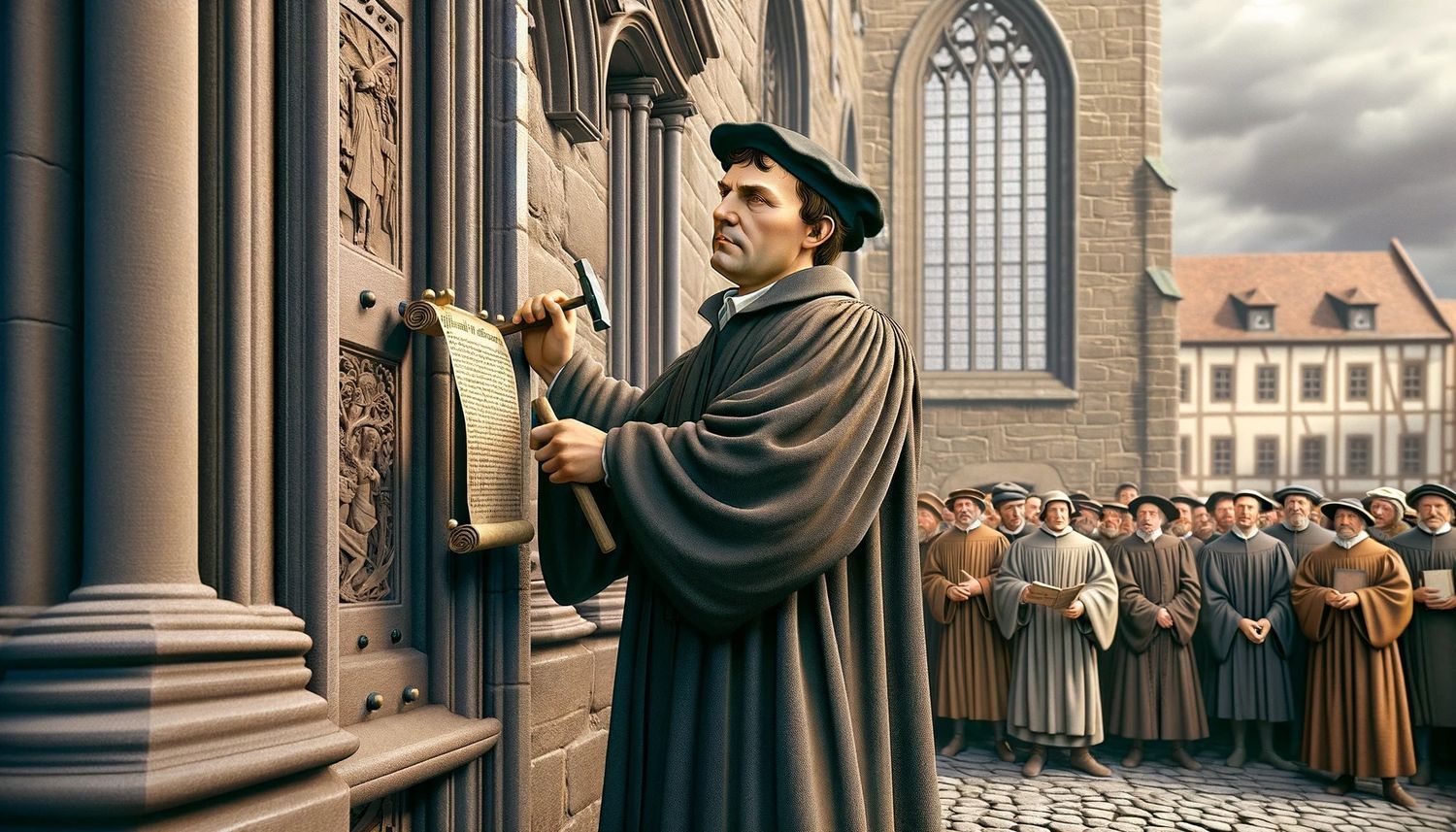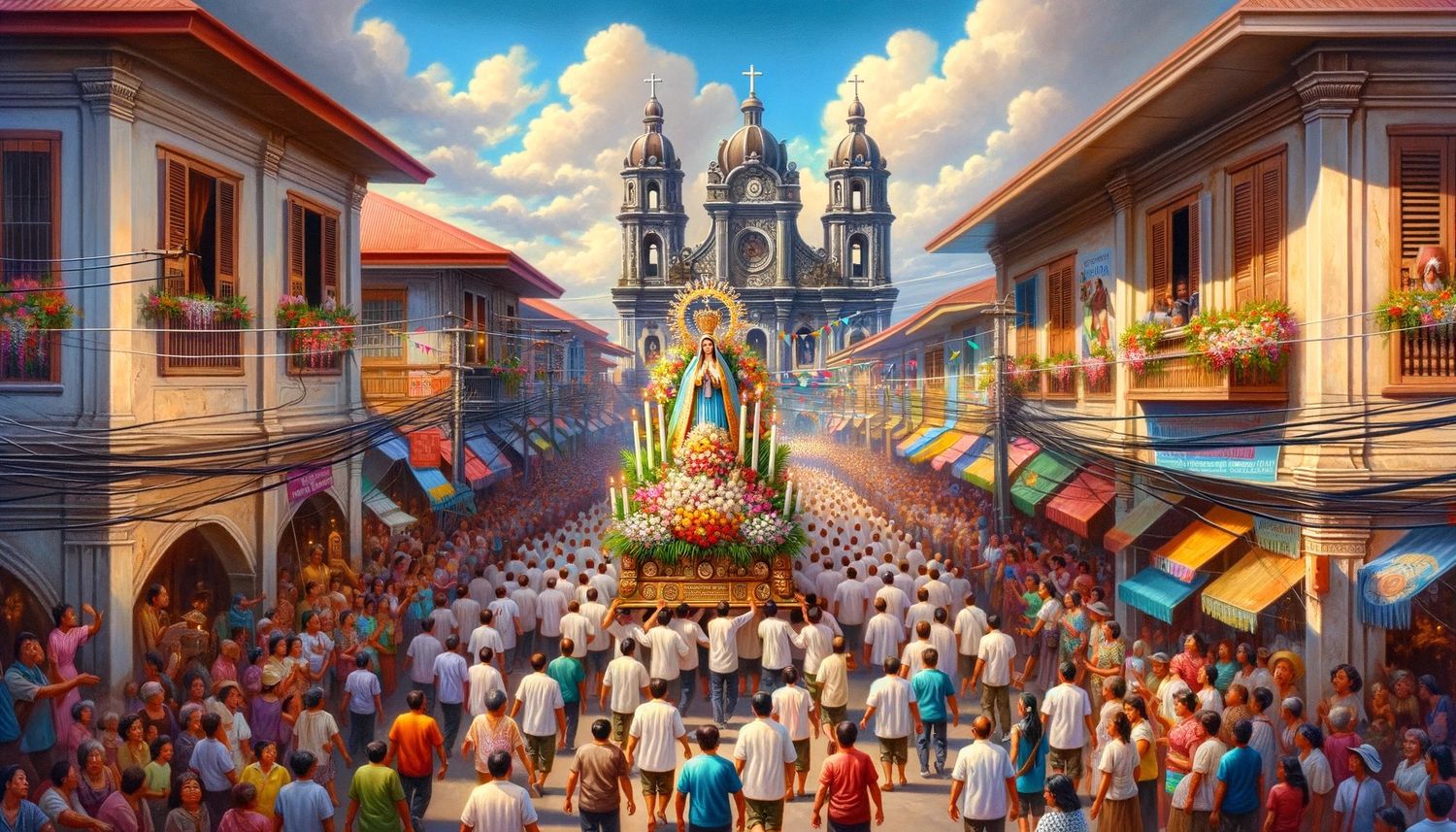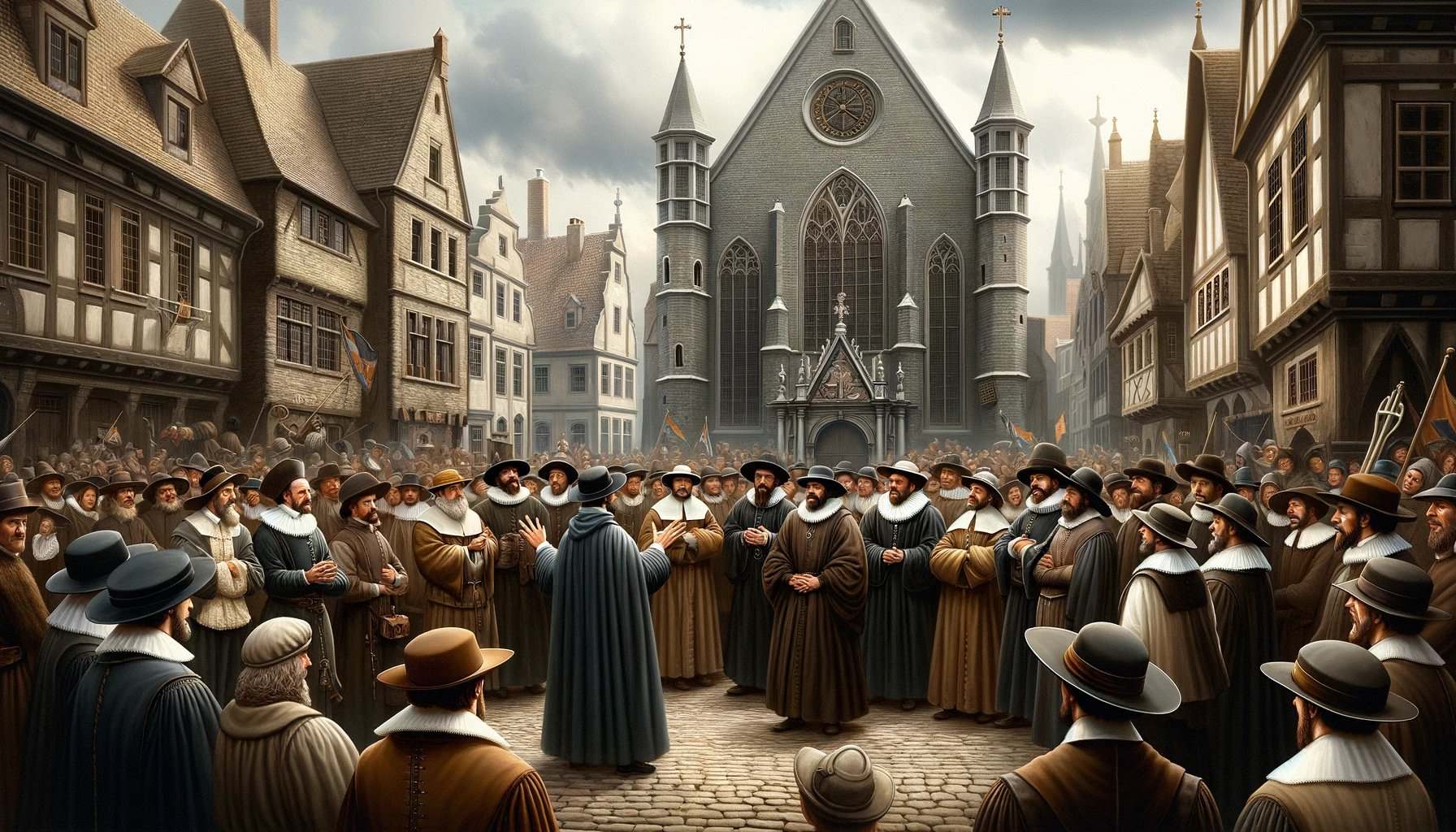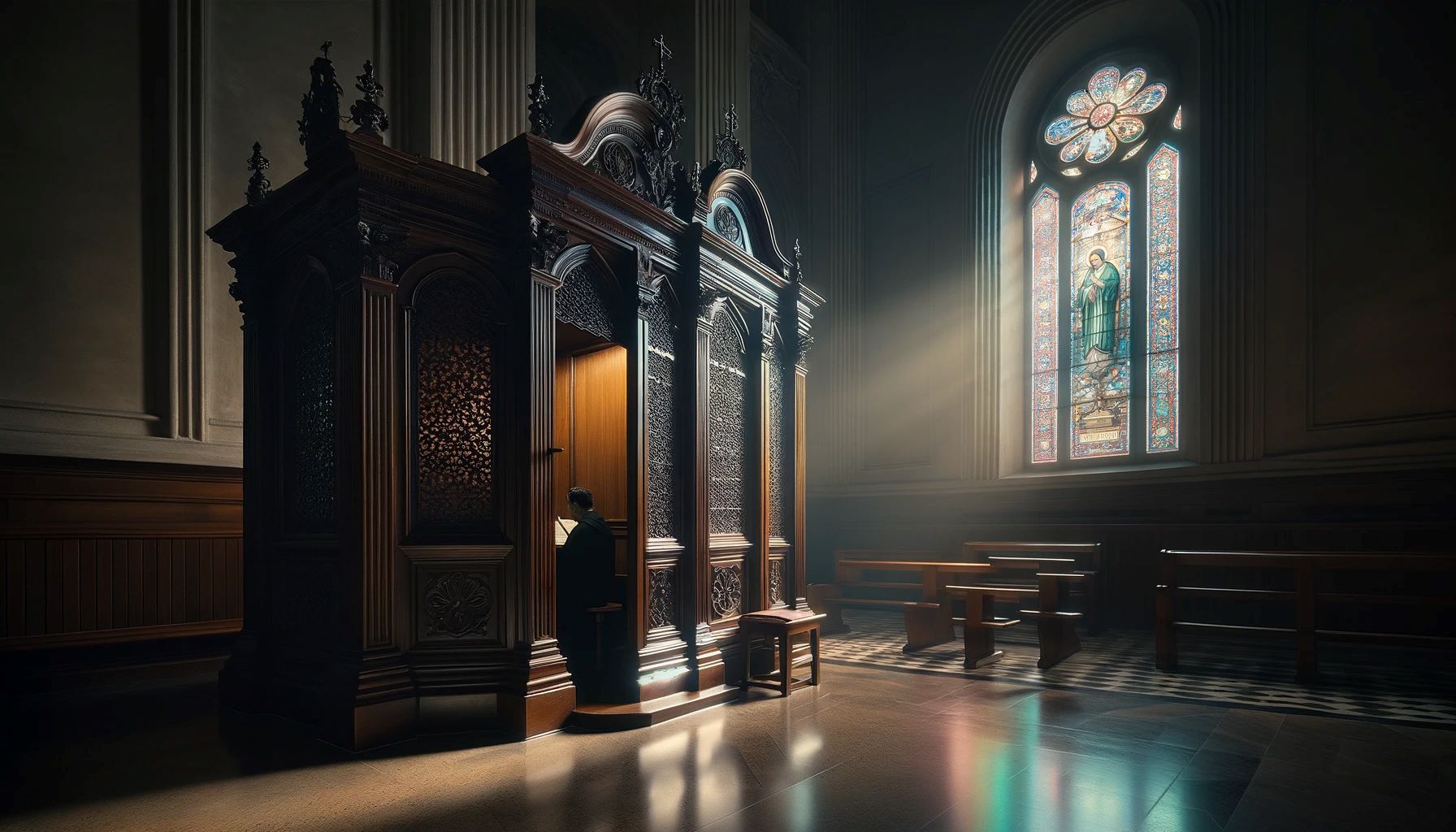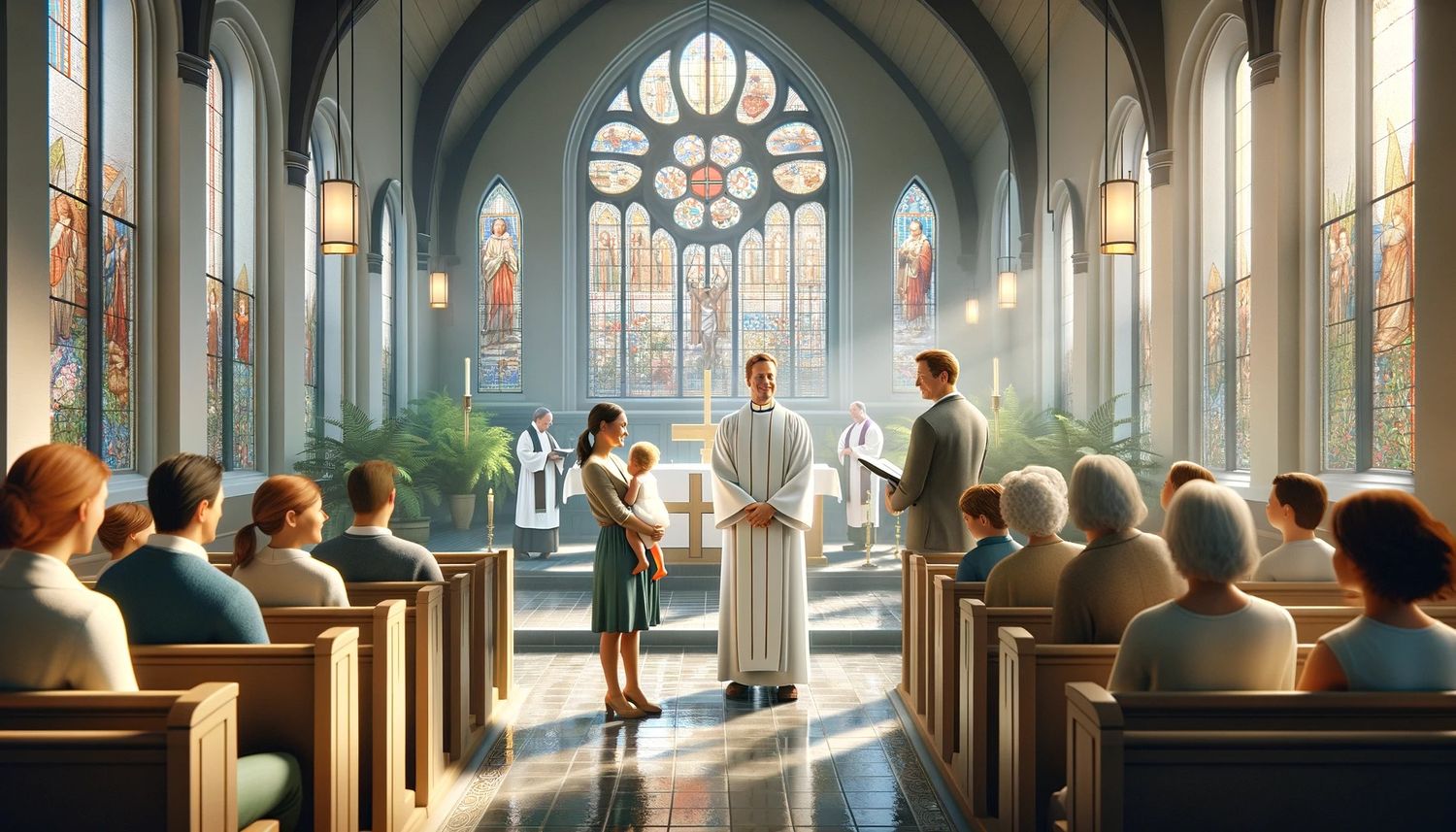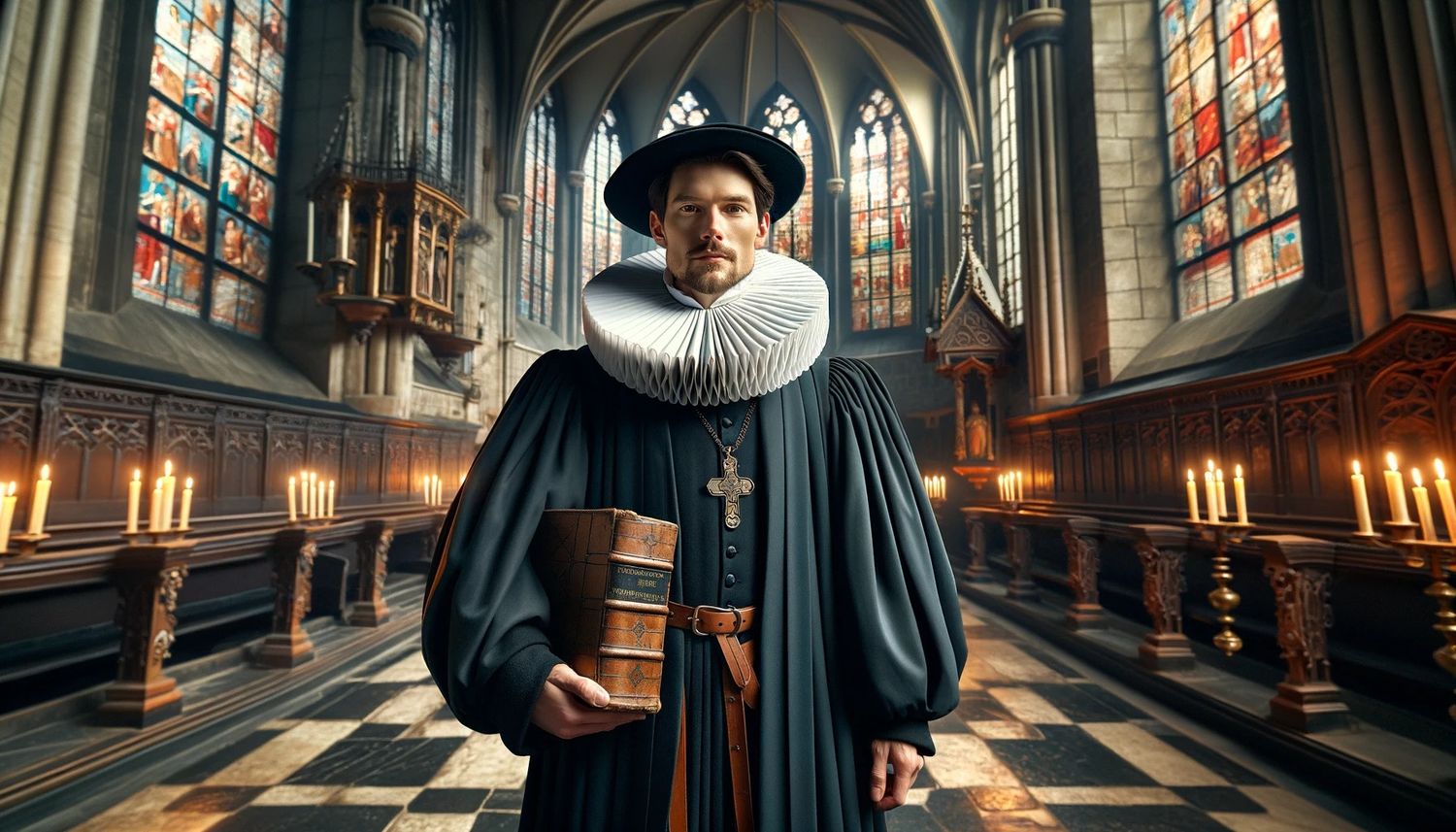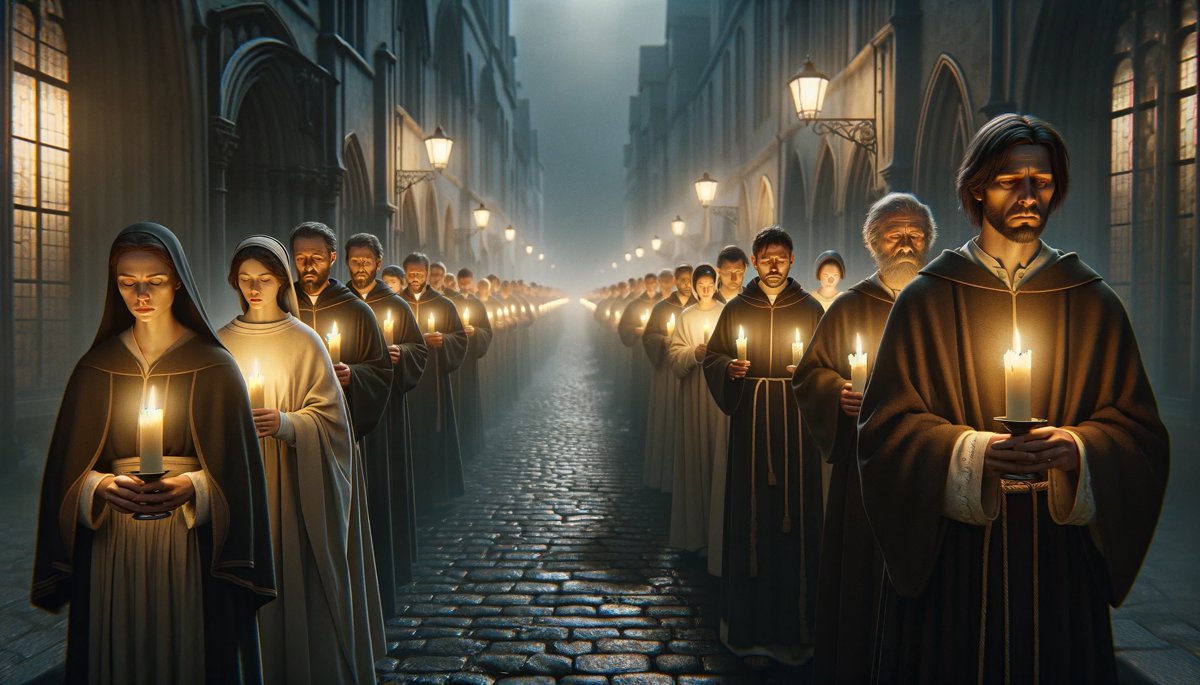Home>Theology and Spirituality>Why Is Northern Europe Mainly Lutheran While Southern Europe Is Mainly Roman Catholic
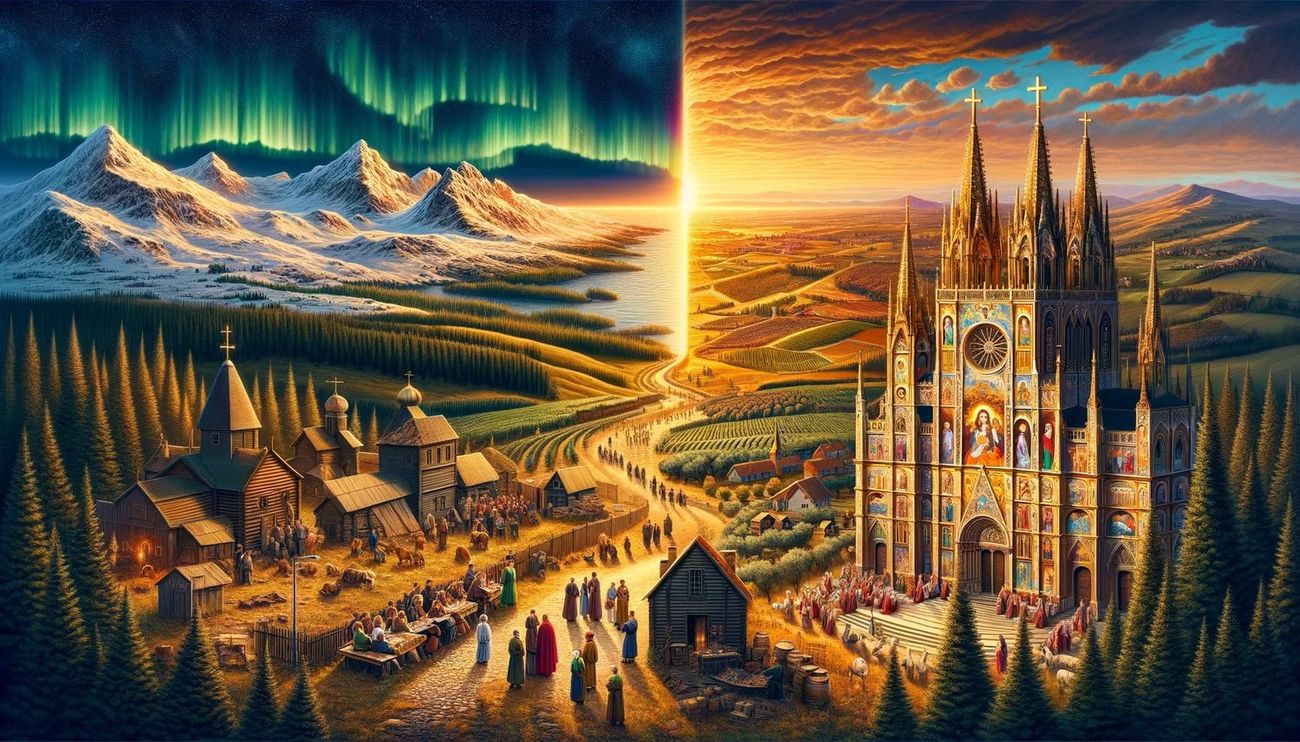

Theology and Spirituality
Why Is Northern Europe Mainly Lutheran While Southern Europe Is Mainly Roman Catholic
Published: March 3, 2024
Ericka Andersen, an editor at Christian.net, expertly merges digital strategy with content creation, focusing on faith and societal issues. Her communication skills enhance the platform's engaging narratives, fostering meaningful dialogue on belief's impact on society.
Discover the historical and cultural factors that led to the predominance of Lutheranism in Northern Europe and Roman Catholicism in Southern Europe. Explore the differences in theology and spirituality that shaped these religious traditions.
(Many of the links in this article redirect to a specific reviewed product. Your purchase of these products through affiliate links helps to generate commission for Christian.net, at no extra cost. Learn more)
Table of Contents
- Historical Background of Lutheranism in Northern Europe
- Spread of Roman Catholicism in Southern Europe
- Influence of Political and Cultural Factors on Religion in Northern Europe
- Influence of Political and Cultural Factors on Religion in Southern Europe
- Impact of the Protestant Reformation on Northern Europe
- Impact of the Counter-Reformation on Southern Europe
- Differences in Religious Practices and Beliefs between Lutheranism and Roman Catholicism
Historical Background of Lutheranism in Northern Europe
The historical background of Lutheranism in Northern Europe can be traced back to the 16th century when a German monk named Martin Luther initiated the Protestant Reformation. Luther's teachings and criticisms of the Roman Catholic Church led to the formation of a new branch of Christianity known as Lutheranism. This movement gained significant traction in Northern Europe, particularly in countries such as Germany, Sweden, Norway, Denmark, and Finland. The spread of Lutheranism in these regions was influenced by a combination of factors, including political, cultural, and religious dynamics.
-
Martin Luther and the Protestant Reformation: Martin Luther's 95 Theses, which he famously nailed to the door of the All Saints' Church in Wittenberg, Germany, sparked a wave of religious reform across Europe. Luther's emphasis on the authority of the Bible, salvation by faith alone, and the priesthood of all believers resonated with many people in Northern Europe who were disillusioned with the perceived corruption and opulence of the Roman Catholic Church.
-
Support from Local Rulers: In Northern Europe, several rulers embraced Lutheranism as a way to assert their independence from the authority of the Catholic Church and the Holy Roman Empire. These rulers saw Lutheranism as a means to consolidate their power and promote national identity, leading to the official adoption of Lutheranism as the state religion in many Northern European territories.
-
Translation of the Bible: The translation of the Bible into vernacular languages, such as German, Swedish, and Danish, played a crucial role in the spread of Lutheranism. This allowed ordinary people to read and understand the scriptures in their native tongues, contributing to the widespread acceptance of Luther's teachings.
-
Educational Reforms: The emphasis on education and literacy within Lutheran communities further facilitated the growth of the movement. Lutherans established schools and universities to educate the population, leading to increased support for the new religious doctrines.
-
Resistance to Papal Authority: The Northern European states' resistance to papal authority and the imposition of taxes by the Catholic Church also fueled the popularity of Lutheranism. The Lutheran movement provided an alternative religious framework that aligned with the aspirations of the ruling elites and the general populace in Northern Europe.
The historical background of Lutheranism in Northern Europe reflects a complex interplay of religious, political, and cultural factors that contributed to the widespread adoption of this Protestant denomination in the region. This historical context laid the foundation for the enduring presence of Lutheranism in Northern European societies.
Read more: Why Can Lutherans Take Catholic Communion
Spread of Roman Catholicism in Southern Europe
The spread of Roman Catholicism in Southern Europe has deep historical roots that have shaped the religious landscape of the region. Southern European countries, including Italy, Spain, Portugal, France, and parts of Eastern Europe, have been historically associated with the dominance of Roman Catholicism. Several factors contributed to the widespread influence and prevalence of Roman Catholicism in Southern Europe, shaping the religious identity and cultural fabric of these societies.
-
Early Christian Legacy: Southern Europe has a rich heritage of early Christian influence, dating back to the apostolic era. The establishment of prominent centers of Christianity, such as Rome and Constantinople, contributed to the dissemination of Christian teachings and the eventual emergence of Roman Catholicism as a dominant religious force in the region.
-
Papal Authority and Influence: The authority of the Roman Catholic Church, centered in Rome, played a pivotal role in the spread of Catholicism across Southern Europe. The papacy's influence extended through the appointment of bishops, the establishment of dioceses, and the propagation of Catholic doctrines, contributing to the widespread adherence to Roman Catholicism in the region.
-
Cultural and Religious Traditions: Southern European societies have been deeply intertwined with Catholic traditions, rituals, and cultural practices. The fusion of religious observances with local customs, festivals, and art forms reinforced the stronghold of Roman Catholicism in the daily lives of the people, fostering a sense of cultural identity closely linked to the Catholic faith.
-
Political Patronage and Endorsement: Throughout history, Southern European monarchs and rulers aligned themselves with the Roman Catholic Church, providing patronage and support for the propagation of Catholicism. The close relationship between the church and the ruling elite bolstered the influence of Roman Catholicism and contributed to its institutionalization as the state religion in many Southern European countries.
-
Counter-Reformation Efforts: In response to the Protestant Reformation, the Roman Catholic Church initiated the Counter-Reformation, which aimed to revitalize and reaffirm Catholic doctrines and practices. This movement, coupled with the establishment of religious orders and missionary activities, further solidified the presence of Roman Catholicism in Southern Europe and beyond.
The spread of Roman Catholicism in Southern Europe reflects a complex interplay of historical, cultural, and religious dynamics that have shaped the religious landscape of the region. The enduring legacy of Roman Catholicism in Southern Europe continues to influence the traditions, values, and collective identity of the diverse societies within the region.
Influence of Political and Cultural Factors on Religion in Northern Europe
-
Support from Local Rulers: In Northern Europe, the influence of political factors on religion was evident in the support extended by local rulers to the spread of Lutheranism. Rulers saw the adoption of Lutheranism as a means to consolidate their power and promote national identity. By embracing Lutheranism, they sought to assert their independence from the authority of the Catholic Church and the Holy Roman Empire. This patronage from ruling elites significantly contributed to the establishment of Lutheranism as the state religion in many Northern European territories.
-
Translation of the Bible: The cultural impact of translating the Bible into vernacular languages cannot be overstated. The availability of the scriptures in languages such as German, Swedish, and Danish allowed ordinary people to engage directly with religious texts, fostering a sense of cultural and linguistic identity. This cultural empowerment through language played a pivotal role in the acceptance and proliferation of Lutheranism, as individuals could now comprehend and interpret religious teachings in their native tongues.
-
Educational Reforms: The emphasis on education and literacy within Lutheran communities was a cultural factor that influenced the religious landscape of Northern Europe. Lutherans established schools and universities, promoting a culture of learning and intellectual inquiry. This educational focus not only facilitated the spread of Lutheran doctrines but also contributed to the development of a distinct cultural identity centered around the values of knowledge and critical thinking.
-
Resistance to Papal Authority: The resistance to papal authority and the imposition of taxes by the Catholic Church in Northern Europe had profound cultural implications. The rejection of external religious control and the assertion of local autonomy reflected a cultural shift towards self-determination and independence. This cultural ethos of self-governance resonated with the broader populace, aligning with the aspirations of Northern European societies for cultural and religious autonomy.
-
Art and Iconography: The cultural expression of Lutheranism through art and iconography played a significant role in shaping religious identity. The visual representation of religious themes in Northern European art reflected the distinctive theological perspectives of Lutheranism, emphasizing the priesthood of all believers and the centrality of scripture. This cultural manifestation of religious beliefs contributed to the consolidation of a unique Lutheran cultural identity in the region.
The influence of political and cultural factors on religion in Northern Europe underscores the intricate interplay between governance, language, education, autonomy, and artistic expression in shaping the religious landscape of the region. These factors collectively contributed to the establishment and endurance of Lutheranism as a prominent religious tradition in Northern European societies.
Influence of Political and Cultural Factors on Religion in Southern Europe
-
Monarchical Patronage: The influence of political factors on religion in Southern Europe is exemplified by the historical alignment of monarchs and rulers with the Roman Catholic Church. Monarchs provided patronage and support for the propagation of Roman Catholicism, intertwining the political authority with the religious institution. This patronage bolstered the influence of the Catholic Church and contributed to its institutionalization as the state religion in many Southern European countries.
-
Cultural Traditions and Festivals: The fusion of religious observances with local customs, festivals, and art forms in Southern Europe reinforced the stronghold of Roman Catholicism in the daily lives of the people. The cultural integration of Catholic traditions into the fabric of society created a sense of collective identity closely linked to the Catholic faith. Festivals, such as Semana Santa in Spain and Festa del Redentore in Italy, are vivid examples of the cultural resonance of Roman Catholicism in Southern Europe.
-
Papal Authority and Influence: The authority of the Roman Catholic Church, centered in Rome, played a pivotal role in the spread of Catholicism across Southern Europe. The papacy's influence extended through the appointment of bishops, the establishment of dioceses, and the propagation of Catholic doctrines, consolidating the religious authority within the region. The cultural and political significance of Rome as the center of the Catholic Church further solidified the influence of Roman Catholicism in Southern European societies.
-
Counter-Reformation Efforts: In response to the Protestant Reformation, the Roman Catholic Church initiated the Counter-Reformation, which aimed to revitalize and reaffirm Catholic doctrines and practices. This movement, coupled with the establishment of religious orders and missionary activities, further solidified the presence of Roman Catholicism in Southern Europe. The cultural impact of the Counter-Reformation efforts reinforced the adherence to Catholic traditions and rituals, shaping the cultural and religious landscape of the region.
-
Art and Architecture: The cultural expression of Roman Catholicism through art and architecture played a significant role in shaping religious identity in Southern Europe. Magnificent cathedrals, such as the Sagrada Familia in Barcelona and St. Peter's Basilica in Vatican City, stand as enduring symbols of the cultural and religious heritage of Roman Catholicism. The artistic representation of religious themes in Southern European art reflected the distinctive theological perspectives of Roman Catholicism, contributing to the cultural manifestation of religious beliefs within the region.
The influence of political and cultural factors on religion in Southern Europe underscores the intricate interplay between governance, cultural traditions, religious authority, and artistic expression in shaping the religious landscape of the region. These factors collectively contributed to the enduring legacy of Roman Catholicism as a dominant religious tradition in Southern European societies.
Impact of the Protestant Reformation on Northern Europe
-
Religious Transformation: The Protestant Reformation, ignited by Martin Luther, brought about a profound religious transformation in Northern Europe. Luther's emphasis on the authority of the Bible, salvation by faith alone, and the priesthood of all believers challenged the traditional doctrines of the Roman Catholic Church. This theological upheaval led to the widespread adoption of Protestantism, particularly Lutheranism, as a distinct religious identity in Northern European societies.
-
Ecclesiastical Reorganization: The Protestant Reformation prompted significant ecclesiastical reorganization in Northern Europe. The establishment of new church structures, governance systems, and liturgical practices aligned with Protestant principles reshaped the religious landscape. The dissolution of monasteries, the abolition of clerical celibacy, and the vernacularization of religious services reflected the reformation's impact on religious institutions and practices in the region.
-
Cultural and Artistic Expression: The Protestant Reformation influenced cultural and artistic expression in Northern Europe. The rejection of elaborate religious art and the emphasis on simplicity and functionality in church architecture reflected the Protestant aesthetic sensibilities. This cultural shift manifested in the visual arts, music, and literature, contributing to the development of a distinct Protestant cultural identity in Northern Europe.
-
Educational and Intellectual Advancements: The Protestant Reformation catalyzed educational and intellectual advancements in Northern Europe. The establishment of schools, universities, and printing presses facilitated the dissemination of Protestant teachings and the translation of religious texts. The emphasis on literacy and education within Protestant communities fostered a culture of critical thinking and scholarly inquiry, contributing to the intellectual vibrancy of Northern European societies.
-
Political and Social Repercussions: The Protestant Reformation had far-reaching political and social repercussions in Northern Europe. The religious divide between Protestant and Catholic territories led to conflicts, such as the Thirty Years' War, and shaped the geopolitical dynamics of the region. The emergence of Protestantism also influenced concepts of individual autonomy, governance, and social ethics, contributing to the broader societal transformations in Northern Europe.
The impact of the Protestant Reformation on Northern Europe reverberated across religious, cultural, educational, political, and social spheres, leaving an indelible imprint on the historical and contemporary fabric of the region.
Impact of the Counter-Reformation on Southern Europe
The Counter-Reformation, also known as the Catholic Reformation, exerted a profound impact on the religious, cultural, and political landscape of Southern Europe. This movement, initiated in response to the challenges posed by the Protestant Reformation, aimed to revitalize and reaffirm Catholic doctrines and practices, particularly in regions where Roman Catholicism held significant influence. The impact of the Counter-Reformation on Southern Europe can be observed through several key dimensions:
-
Doctrinal Renewal: The Counter-Reformation spurred doctrinal renewal within the Roman Catholic Church in Southern Europe. Efforts were made to clarify and reaffirm core Catholic teachings, addressing perceived theological ambiguities and moral laxities. The Council of Trent, convened by the Catholic Church, played a pivotal role in articulating and promulgating doctrinal decrees, reaffirming the authority of tradition alongside scripture, and addressing issues such as the sacraments, liturgy, and the role of the clergy.
-
Ecclesiastical Reforms: The Counter-Reformation prompted significant ecclesiastical reforms in Southern Europe. The establishment of seminaries for the training of priests, the reinvigoration of religious orders, and the emphasis on pastoral care and missionary activities reflected the church's commitment to revitalizing its institutional structures and religious practices. These reforms sought to strengthen the spiritual and administrative foundations of the Catholic Church in Southern European societies.
-
Cultural and Artistic Expression: The cultural and artistic expression of Roman Catholicism in Southern Europe was profoundly influenced by the Counter-Reformation. The promotion of Baroque art and architecture, characterized by its emotive grandeur and theatricality, served as a visual manifestation of the Catholic faith's dynamism and spiritual fervor. Magnificent churches, such as the Church of the Gesù in Rome and the Cathedral of Santiago de Compostela in Spain, exemplified the artistic legacy of the Counter-Reformation in Southern Europe.
-
Institutional Consolidation: The Counter-Reformation contributed to the consolidation of the Roman Catholic Church's institutional authority in Southern Europe. The reaffirmation of papal supremacy, the establishment of the Roman Inquisition to combat heresy, and the propagation of Catholic orthodoxy through catechisms and religious education reinforced the church's influence within the region. These institutional measures aimed to safeguard the integrity and unity of the Catholic faith in the face of religious challenges.
-
Social and Political Dynamics: The Counter-Reformation intersected with the social and political dynamics of Southern Europe, shaping the collective identity and governance structures of the region. The alignment of monarchs and rulers with the Catholic Church, the promotion of Catholic piety and devotion among the populace, and the integration of Catholic rituals and traditions into the fabric of society underscored the enduring impact of the Counter-Reformation on the social and political ethos of Southern European communities.
The impact of the Counter-Reformation on Southern Europe reverberated across religious, cultural, artistic, institutional, and societal dimensions, leaving a lasting imprint on the historical and contemporary identity of the region.
Differences in Religious Practices and Beliefs between Lutheranism and Roman Catholicism
The differences in religious practices and beliefs between Lutheranism and Roman Catholicism reflect distinct theological, liturgical, and doctrinal divergences that have shaped the identities of these two Christian traditions.
-
Sacraments and Liturgy:
- Lutheranism: Lutherans recognize two sacraments, Baptism and the Eucharist, as ordained by Christ. They emphasize the symbolic presence of Christ in the Eucharist, known as consubstantiation, and practice a simplified liturgical structure.
- Roman Catholicism: Roman Catholics acknowledge seven sacraments, including Baptism, Eucharist, Confirmation, Reconciliation, Anointing of the Sick, Holy Orders, and Matrimony. They uphold the doctrine of transubstantiation, believing in the literal transformation of the bread and wine into the body and blood of Christ during the Eucharistic celebration. The Roman Catholic liturgy is characterized by its elaborate rituals and ceremonial traditions.
-
Authority and Tradition:
- Lutheranism: Lutherans adhere to the principle of sola scriptura, emphasizing the authority of the Bible as the sole source of divine revelation. They reject the infallibility of the Pope and prioritize the primacy of scripture in matters of faith and doctrine.
- Roman Catholicism: Roman Catholics uphold the authority of both scripture and sacred tradition, as interpreted by the Magisterium, which includes the Pope and the college of bishops. They affirm the doctrine of papal infallibility, regarding the Pope as the supreme authority in matters of faith and morals.
-
Salvation and Justification:
- Lutheranism: Lutherans emphasize the doctrine of justification by grace through faith, asserting that individuals are justified before God by faith alone, apart from works. They reject the notion of merit-based salvation.
- Roman Catholicism: Roman Catholics affirm the role of faith and good works in salvation, viewing justification as a process that involves both the grace of God and the cooperation of the individual through meritorious deeds.
-
Clergy and Religious Practices:
- Lutheranism: Lutherans have a more decentralized clerical structure, allowing for the ordination of both men and women as pastors. They do not venerate saints or practice the veneration of Mary to the extent seen in Roman Catholicism.
- Roman Catholicism: Roman Catholicism maintains a hierarchical clergy, with the ordination of male priests and the veneration of saints, including the Blessed Virgin Mary, as intercessors and models of faith.
-
Theology of the Cross and Theology of Glory:
- Lutheranism: Lutherans embrace the theology of the cross, emphasizing the paradox of God's power being revealed through weakness and suffering. They view the Christian life as one marked by the experience of the cross and the assurance of God's grace.
- Roman Catholicism: Roman Catholic theology encompasses elements of both the theology of the cross and the theology of glory, emphasizing the redemptive significance of Christ's suffering while also emphasizing the hope of divine glory and exaltation.
The differences in religious practices and beliefs between Lutheranism and Roman Catholicism reflect the theological and historical developments that have defined these two Christian traditions, contributing to their distinct expressions of faith and worship.
